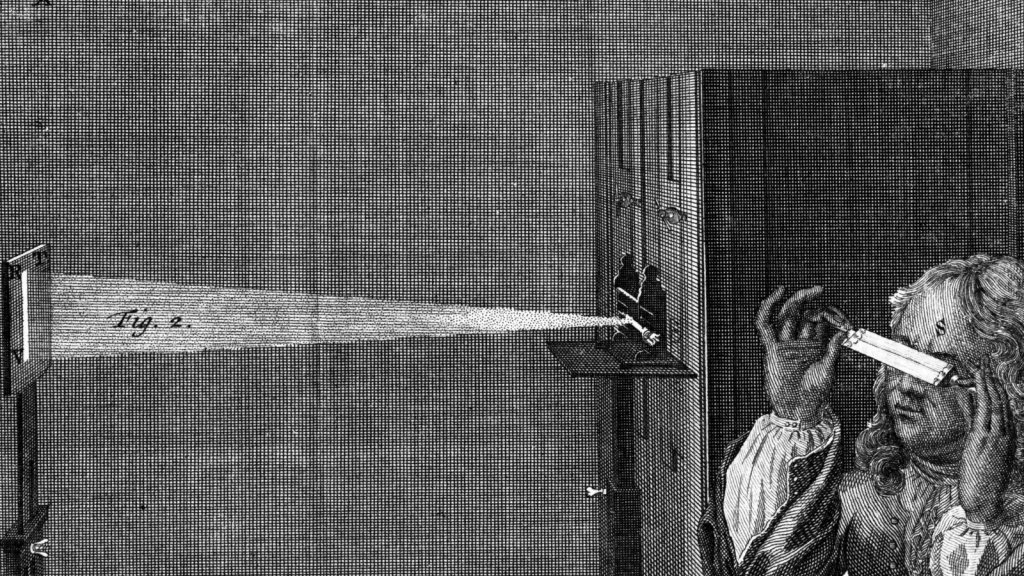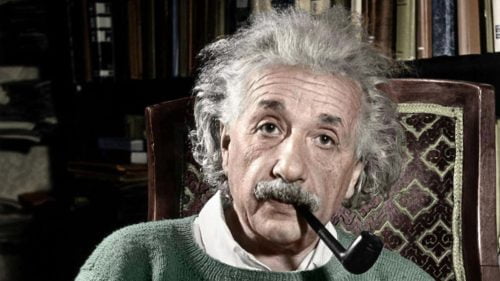Although the idea that the Earth can move has been proposed since ancient times, it was first elaborated in detail in the modern era by Nicolas Copernicus, and scientists since then have been interested in demonstrating the factual basis for the Earth being a planet.
To recall briefly, Johannes Kepler discovered that orbits are ellipses and calculated the distances between the planets and the Sun by this idea; Galileo Galilei observed that the Earth and the sky have similar qualities. Now, in light of this information, there was a need to clearly reveal how the new arrangement of the Earth and the Sun, whose positions had changed according to the old perception, worked, in other words, to design a new universe. Isaac Newton met this need.
Newton’s Scientific Works

Newton wrote two important works, one on mechanics and the other on optics. His work on mechanics, known simply as Principia, is entitled Philosophie Naturalis Principia Mathematica (Mathematical Principles of Natural Philosophy, 1687).
In this work, he explained his views and discoveries on mechanics-related issues, such as gravitation, the motion of the Earth, the path of a thrown object, and the laws of force regarding the planets, time, and space.
Another striking aspect of the book, which also includes the new scientific method he developed, is that all kinds of motion, including the phenomenon of gravity, are explained in terms of parts and space.
According to Newton’s approach, called “particle theory,” everything with mass can be considered a particle; thus, the interaction between two particles can always be considered. This theory, which makes it extremely easy to explain the mechanical phenomena in the universe mathematically, has three principles.
The first is known as the First Law of Motion (Inertia). Every object remains at rest or in motion in a straight line as long as it is not forced to change this state by forces acting on it.
The latter is called a change of motion. The change of motion of an object is proportional to the force exerted on it and takes place in the direction in which the force is applied.
The third is the principle of action-reaction. For every action, there is always an equal reaction, i.e., the reciprocal effects of two objects on each other are always equal and in opposite directions.Thus, Newton, who predicted that any two objects in the universe, including celestial objects, act on each other in repulsion and attraction, derived his famous law of universal gravitation from Kepler’s third law, the inverse square.
The verbal and mathematical expression of the law is as follows: Any two celestial objects in the universe act on each other in direct proportion to their mass (M) but inversely proportional to the square of the distance (r) between them: F= G.M1 x M2 ⁄r2. Newton gave mechanics a theoretical character with these three principles and the law of universal gravitation.
Understanding of the Scientific Method

In Principia, Newton also expressed his views on science; even the book’s title reflected his thoughts on scientific work. He preferred to use the expression “natural philosophy,” referring to the word “nature,” the traditional philosophical equivalent of the concept of physics.
However, he considered the modern use of natural philosophy and was particularly influenced by René Descartes and Galileo’s emphasis on mathematics. He drew attention to mathematics by saying, “The way to obtain accurate knowledge of natural phenomena is to subject them to mathematical laws.” He presented his book to his readers with Mathematical Principles of Natural Philosophy. Thus, he expressed the necessity of examining phenomena based on observations and the importance of mathematical certainty in reaching conclusions.
In the “Introduction” part of the book, he stated that mechanics was given great importance in the study of nature from the past to his own time, that this attitude was maintained in the modern period, and that efforts were made to explain natural phenomena with laws, leaving aside occult qualities.
After clarifying these, Newton wrote:
“In this work, I have developed mathematics as far as it relates to natural philosophy. Mechanics, that is, the problems of motion, require a great deal of geometry. Geometry is the measure of the discipline that studies mechanics: motion problems. Geometry offers us extraordinary possibilities in explaining the motion of objects. In this sense, mechanics acquires a rational dimension. Thus, it is possible to accurately predict the movements caused by any force and the forces required to produce any movement.”
”The main problem of natural philosophy, or mechanics in the same sense, is to investigate the natural forces such as push, pull, gravity, weight, etc., that act on phenomena related to motion, and to prove that these forces are similarly effective in the formation of other phenomena.”
“For this purpose, I only gave general principles in the first and second chapters of my book; in the third chapter, titled “The World System,” I presented examples of predictions. In doing so, I took the effect of the object on the object as a basis, starting from a natural force such as gravity. Based on the effect of the object on the object, I explained the motions of the Sun, planets, comets, and the moon.”
“I envision that the remaining natural phenomena can be explained with the help of mechanical principles through the same kind of reasoning. Thus, explaining all kinds of push/push and pull/pull situations will be possible.”
”I hope that the principles I have laid out here will shed light on the correct method to be followed in philosophy. In other words, explaining phenomena with laws derived from facts should be a constant rule. If this is not followed, explanatory assumptions based on pure thought can be put forward. However, explanations (hypotheses) whose source is not facts cannot be considered scientific; moreover, such ideas should be regarded as fabrications.”

For further reading:
• 22 Best Physics Textbooks, According to a Harvard Ph.D. Student in Physics
• Seventeen Equations That Changed the World
• 20 Greatest Mathematicians: the Masters of Mathematics from the Past, Present, and Future














